-
solutinos
-
Hire
Frontend Developer
Backend Developer
-
NodeJS Developer
-
Java Developer
-
Django Developer
-
Spring Boot Developer
-
Python Developer
-
Golang Developer
-
Ruby on Rails Developer
-
Laravel Developer
-
.NET Developer
Technology
-
Flutter Developer
-
React Native Developer
-
Xamarin Developer
-
Kotlin Developer
-
Cross-Platform Developer
-
Swift Developer
-
MongoDB Developer
-
C Developer
-
Smart Contract Developers
Cloud
-
-
Services
Mobile Development
Web Development
- Work
-
Multi Services App
-
Food Delivery App
-
Grocery Delivery App
-
Taxi Cab Booking App
-
Multi Services App
-
OTT Platform APP
-
Social Media APP
-
Freelance Service App
-
Car Rental App
-
Medicine Delivery App
-
Liquor Delivery App
-
Sports Betting App
-
Online Coupon App
-
eLearning App
-
Logistics & Transportation App
-
Courier Delivery App
-
On-Demand Real Estate App
-
E-Wallet APP
-
Online Dating App
-
Handyman Services App
-
-
Process
-
Company
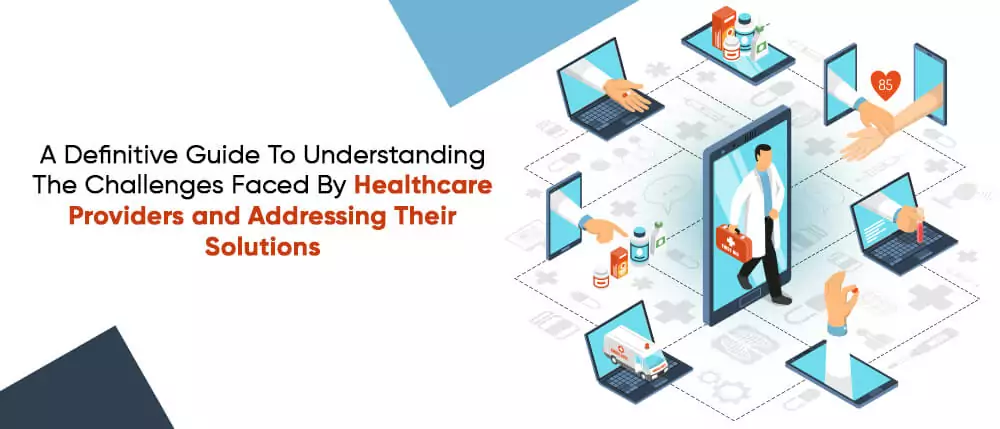
Digital transformation is an all-encompassing solution. It’s not just meant for one particular wing or segment of healthcare. If healthcare insurers have an edge at the market with digitization of processes and services, healthcare providers have, too.
In our previous post, we identified several problems faced by healthcare insurers because of their obsolete modus operandi. We also revealed solutions to each. In this post, we’re going to shed light on the aspect at the other side of the healthcare spectrum – healthcare providers.
Healthcare providers is a generic term and refers to any entity, service or medium that is associated with providing healthcare to patients and people. You can classify healthcare providers into three distinct categories:
- Hospitals and medical centers
- Ambulatory service providers
- Rehabilitative facilities and nursing homes
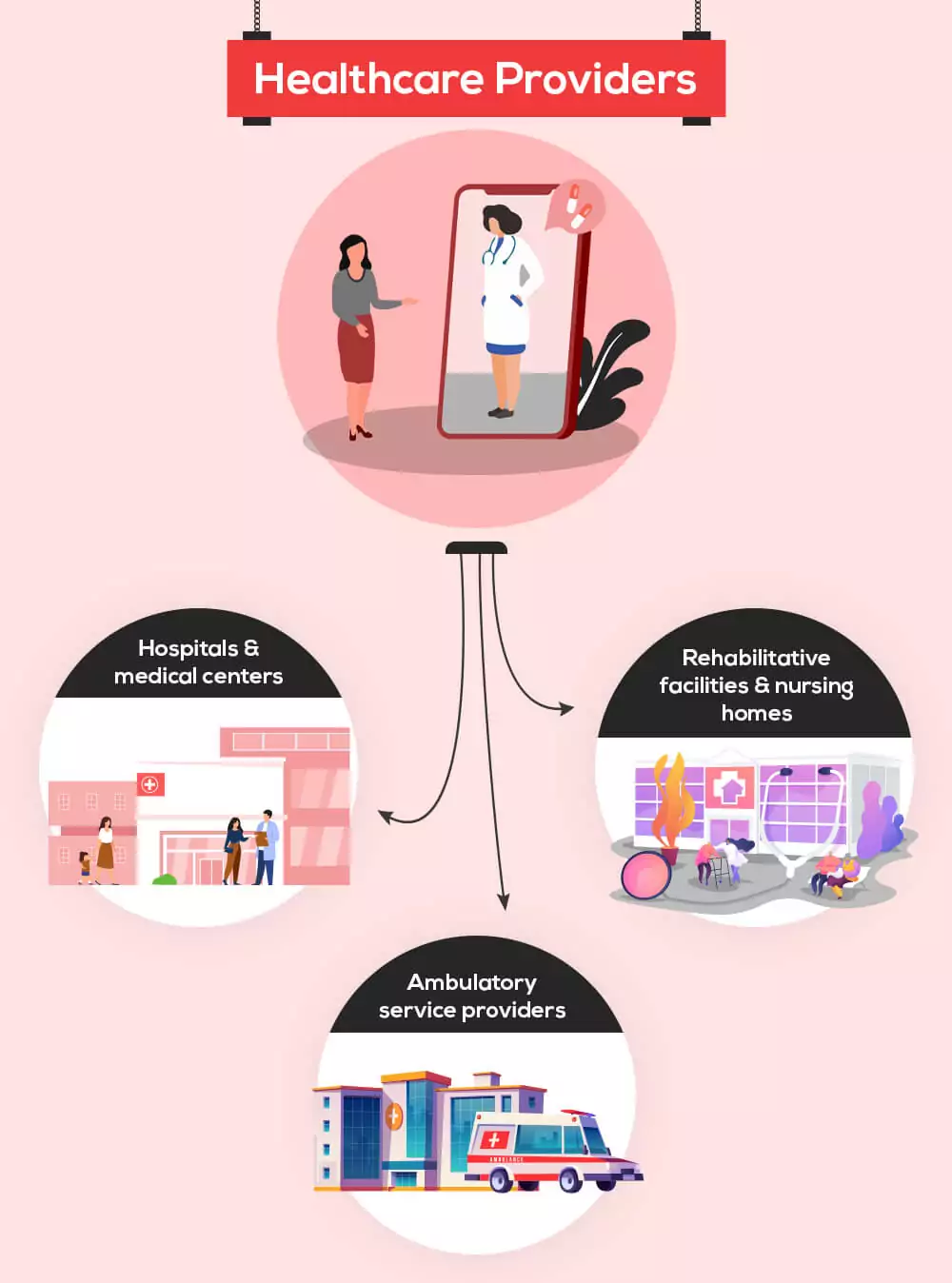
To understand what the role of each in the healthcare chain, let’s look at them in brief.
Hospitals and Medical Center
These are the clinics and treatment centers, you as a patient head to when one or more symptoms of an underlying disease or concern begins to show up. They follow the protocols of an evidence-based treatment process, where a relevant center of diverse facilities in the chain studies your complications and helps you get better.
Ambulatory Service Providers
This refers to any type of care or a treatment that does not require you to stay overnight at a hospital. Commonly misunderstood, this does not mean ambulance services. Instead, it involves the services of a diagnostic center, a dentist clinic, rehab visits or any treatment facility or center where you are an outpatient. Blood tests, chemotherapy sessions, mammograms, general check-up during pregnancy and more are ambulatory services and those involved in the delivery of these services are ambulatory service providers.
Rehabilitation Centers and Nursing Homes
These are facilities that foster an environment for you to recover from your illness. The illness could be physical or mental. Patients suffering from Parkinson’s disease, substance abuse, post brain surgery effects and more are nursed at these facilities. There are long-term acute care, inpatient, skilled nursing and other types of rehabilitative centers.
If you own a business that falls under any of the above-mentioned categories, you could be facing several challenges in the day-to-day operations. From staffing and optimizing processes to data interoperability, there could be tons of concerns prevailing in your business, especially when you don’t have modern tech-based solutions working for you.
To help you identify some challenges you could be facing, we have identified and listed out some of the most common of them. Let’s look at them one by one.
But before that, let’s get their perspective in numbers.
- 86% of the mistakes made in healthcare are administrative.
- Because test results of patients cannot be found, 3 out of 10 tests are redone or the results are reordered.
- Healthcare providers, on an average, fill out 20,000 forms each year.
- The patient charts of about 30% patients go missing.
- Close to 80% of all crucial medical mistakes are due to miscommunication of patient details during transition.
Well, these don’t end here. There are more. Let’s understand them as we deal with the challenges.
Real-time Challenges Faced By Healthcare Providers
Siloed Systems and Processes
Though the healthcare provider system appears as one giant module, it’s all actually fragmented in terms of processes and systems. This threatens hospitals and healthcare providers from improving their efficiencies and reducing costs. The coordination between departments is usually poor and prevents them from delivering an integrated patient care scheme. This could result in mismanagement of hospital beds, staffing, loss of test results or communication like we just read.
The Bureaucratic Hassles
The administrative healthcare costs in the US are around $600bn more than that of Canada’s. The spending in the US healthcare is more than any other major country you could think of and it is mostly because of subcontracts to Medicaid and medicare programs. In operating your healthcare providing venture, there are costs and concerns you could not control and this is one of them. But by digitization, you could address other areas associated with this and bring about a paradigm shift in the mindset and operations of your facilities.
Disjointed Systems and Processes
Manual Processes Prone to Errors
For those of you who didn’t know, around one quarter of the patients in the US reported that their results and records from physicians or doctors did not reach another provider on time, thus increasing their wait time and delaying their treatment procedures. If you notice, this absolutely stems from the manual process in place and the lack of a digital medium or a portal to facilitate data or insights interoperability.
Results have to be manually retrieved by diagnostic centers and delivered to the next physicians or patients and when there are more such deliveries in a day, there could be mismatch in records and the chances of data going missing as well. Anything human is bound to give rise to errors and it’s high time healthcare providers wake up to this.
Medicare and Medicaid Reimbursement
What is crucial in getting reimbursement is documentation. A document is a proof of all activities that happened and supports what you went through in the healthcare facility. They strengthen your evidence to process your reimbursement. However, documentation is where several organizations fumble. With improper data or information management, patients often end up with insufficient documentations to support the processing of their claims. This not only delays the processing time but increases the chances of getting rejected as well. Because of this, several patients have ditched healthcare programs to prefer a pay-as-you-go model.

Poor Supply-chain Management
Like any other organization, healthcare providers also have their supply-chain wing in their system. Here, the supply usually includes surgical instruments, medications, drugs required in patient care and pre-surgery formalities and more. When a provider relies on obsolete or manual methods to manage supply-chain, the situation only gets worse. With the absence of a centralized system to provide all supply-chain related information in one place, tracking inventory, managing, replenishing and reordering it is not only difficult but impossible to an extent. Any delay in procuring these could prove to be lethal to patients as well.
Managing Volumes of Patient-related Data
Did you know that 70% of the specialists who receive referral patient information rate the information as poor? Well, that is bound to happen when patient-related data are still reliant on manually-fed inputs on paper. Healthcare centers are some of the busiest entities in the world and there are more people entering and leaving and storing all the data offline is risky. There could be data mismatch, inappropriate recording of data, missing data, lack of entries of vital information and more. Imaging how centers would operate if they had to fill in just one out of several forms 20,000 times a year.
Inefficiencies and Errors in Data Sharing
Data interoperability is playing a critical role in the healthcare chain today yet several organizations out there are taking it for granted. This is crucial as data interoperability is all about giving the power to doctors, physicians, clinics, diagnostic centers, healthcare insurers and patients to access, modify, store and retrieve crucial patient information. Data is the very source and evidence through which treatments and procedures are given and when there are inefficiencies in this, anything could go wrong in treating patients. Doctors being unable to retrieve data when preparing for a surgery, clinics having insufficient data about reports, pharmacies receiving partial details about diseases and more, the possibilities are endless. Such inefficiencies also delay treatments and service deliveries, too.
Payment Processing and Invoicing
Two of the most redundant tasks in a healthcare center are still manual in several places. Payment processing and invoicing are still not patient-friendly in places and they are required to run around in hoops to make their payments. There are hardly digitized payment mediums in place that could immediately accept multiple forms of payments that patients and their circles are comfortable paying with. Billing and invoicing are still digital with the dot-matrix printers taking their own time to print the details. Paperless transactions are still new concepts in several states and cities in the country.
Healthcare Staffing Shortages
What is seen as a rewarding and wholesome job out there is also one of the most cumbersome. Hospital staff are some of the most overworked labors in the world, with several doing double shifts. This stems out of the fact that there are no solid staffing practices and protocols in place. There are no rostering procedures or morale moderators that could give the administrative departments a view of what their staff go through and endure every day. Such places also witness heavy attritions, resulting in further shortage. The quick result, the current pool of manpower taking up additional shifts. There is no automation or pipeline based rostering mechanism that could sort things out.
To put things in perspective, the country is short of 9000 physicians this year and this is expected to grow to 25,000 physicians by 2025. In a 2016 survey conducted, it was found that over 50% of the staff were working longer hours than what was ideal for patientcare. 65% of the hospitals revealed that they work more with agency and temporary staff.
This takes a direct toll on employee morale and teamwork because staff have to work with a new face frequently without any rapport. And this directly affects patientcare, as it all stems from psychological reactions from within.
We have statistics to show you that over 65% of the staff shared that they felt unpleasant to work with staff from other hospitals. 94% of the nurse managers revealed that staffing and scheduling concerns negatively affected employee morale.
Convenience of Care for Consumerism
Healthcare consumerism is something that is unheard of in the market today. It’s unlike buying any commodity or service in the market, where the buyer is actually completely involved in the purchasing process. The buyer shops for potential products in the market, gets in touch with multiple brands and businesses, checks reviews, assesses the pros and cons of each and more.
But when it comes to purchasing healthcare policies, consumerism doesn’t come into the picture at all. Consumers have the weakest say in the chain and they are mostly taken care of by employers, where consumers simply end up contributing in terms of payments of premiums or giving basic details. To facilitate better coordination between healthcare providers and consumers, people have to be taught to make informed decisions about their healthcare policies and plans. And for this, the right tools and technologies must reach them and as of now, there is little to zero scope for this.
Job Satisfaction Negatively Affected
Job satisfaction is influenced not just by adequate monetary compensations and rewards but by a lot of factors. Job satisfaction is directly associated with the environment doctors and healthcare professionals work in, the tools, equipment and infrastructure they are given to work with, the right intensity of challenges they are poised with and more. When doctors and physicians hardly have any of these, it negatively affects their job satisfaction levels. For instance, doctors having to manually fill in patient details and records on offline mediums, taking away their time from actually treating patients and delivering patient care, doctors having to wait for the right details to reach them from clinics, diagnostic centers, referrals and more.
How Can These Challenges Be Fixed?
One-word solution would be to bring in digitization. But that would be too vague. All the problems we identified are distinct and required tailored solutions. That’s why we have listed several solutions below.
Let’s explore them.
Tele-Counselling App
Tele-counselling app is otherwise known as telehealth. If you’re new to this, understand that telehealth is using telephones – or smartphones these days – to avail healthcare services. Applications that are based on on-demand services, telehealth, virtual counselling sessions and more.
With these apps, patients don’t have to step out of their homes to avail healthcare services. All their doctor consultations, check-ups, visits, discussions and more could be done virtually through apps and the features of the smartphone.
There are two diverse benefits – to patients and healthcare providers.
Benefits to Patients
- Immediate access to health specialists without having to wait two weeks for appointments
- Eliminates the need to travel, especially for the elderly
- Reduced expenses
- Easy to use
Benefits to Providers
- Increased patients to be treated on a daily basis
- Improved staffing
- Integration with electronic health records
- Reduced no show of appointments
Features of Telehealth Apps
- The ability to schedule meetings and set reminders in phone calendar
- Engagement and reminders through push notifications
- Entire medical history of the patient in the palm
- Virtual connectivity through audio or video calls
- Multiple payment systems
- Automated invoicing and billing and more
Apart from applications, there are also web and mobile-based healthcare systems that pull off several organizational processes. These could be enterprise editions of software applications that could be installed or SaaS-based portals that could be accessed from any device. In short, they are feature-rich and bring in an array of possibilities. This includes clinician onboarding, where in a few simple steps, clinicians could be onboarded and verified.
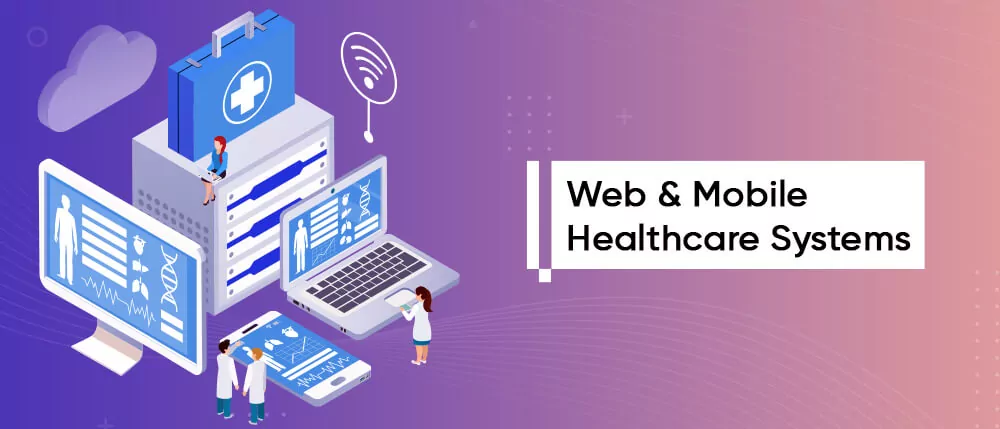
With social sign in, double-opt in, government document upload features, genuine clinicians could be easily verified and onboarded.
One of the greatest benefits of digitization in healthcare is the concept of electronic health records. These are digital records of patients stored over the cloud. Because they sit on the cloud, they could be accessed, retrieved and modified by authorized people from any part of the world. A patient in Detroit could consult with his family doctor in San Jose with the help of electronic health records.
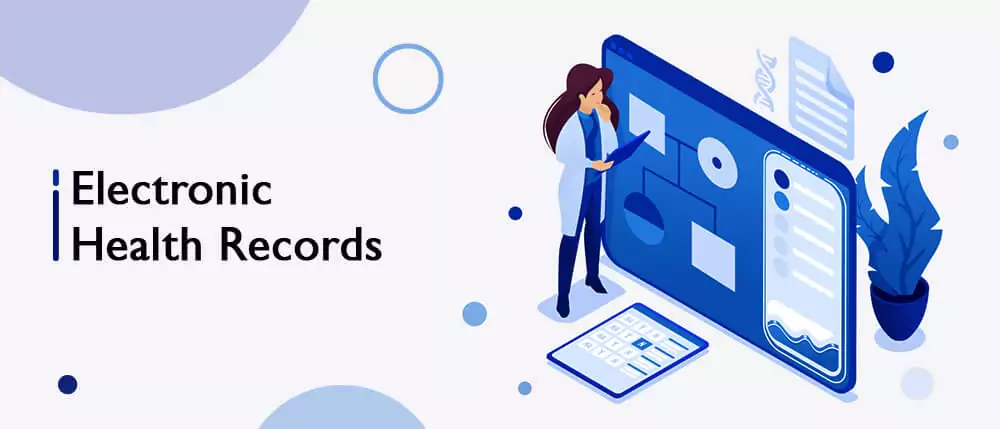
The doctor could immediately pull-out details, understand symptoms and patient history and suggest appropriate medications. Electronic health records are also extensive data sets that have advanced details about patients.
From their age and demographics to specific allergies and reactions to certain medications, they have airtight insights that eliminate any inaccuracy problem arising midway.
Inventory Management System
This fixes the supply-chain concern we mentioned before by offering organizations a portal to maintain and track all their inventories from one single place. Clinical assets ranging from disposable gloves and masks to obsolete ECG equipment could be added, monitored and reordered from a single click. With advanced digitization, supply-chain could also be automated with the implementation of the Internet of Medical Things and workflows.
Omnichannel Experience
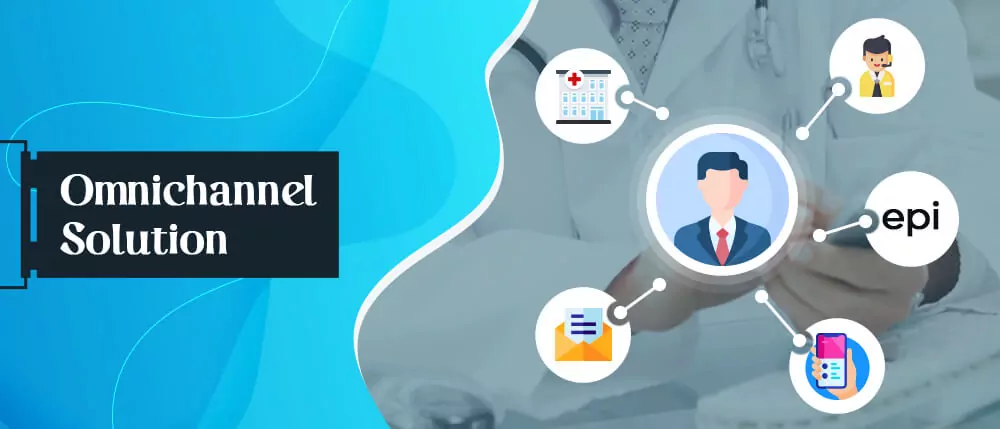
With digitization, one thing healthcare providers need not worry about is the accessibility of data from various devices. Since data is stored on the clouds and not on individual devices, both organizational and patient details are always available at disposal. Besides, modifications could also be made by authorized staff and the changes would immediately reflect on the data. For added benefits, these details could also be saved for offline use for more extensive studies.
Healthcare Administrative Solutions
You could also refer to this as a hospital management program, where intelligent systems and portals can completely take over human dependency for redundant tasks. Today’s programs are designed to execute tons of complex tasks either manually or autonomously. To get started, here are a few tasks such programs can manage:
- Scheduling appointments
- Patient management (both inpatient and outpatient)
- Pharmacy management
- Billing and invoicing
- Inventory management
- Payroll and human resource management
- Lab information management
- Recruitment, onboarding and training
- Intra-organizational paging and messaging and more
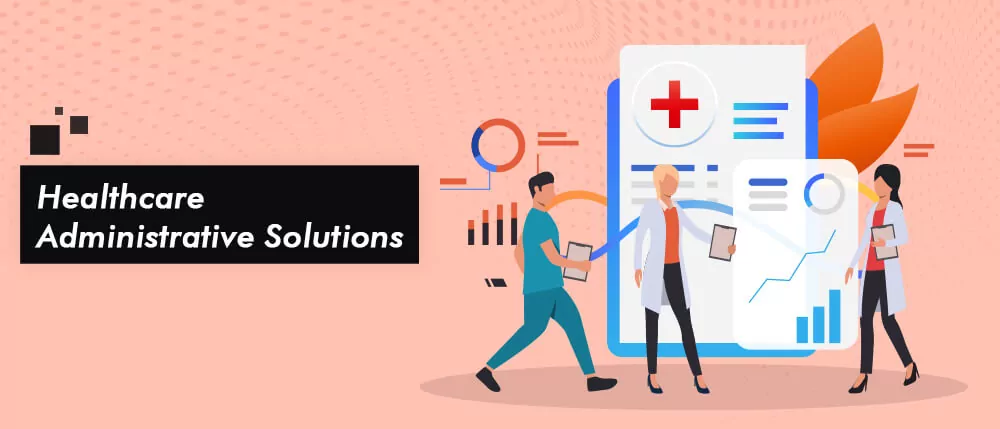
Patient Management Apps
Patient management apps are the one-stop-solutions for all things patient-related. These applications simplify tasks and activities at the patient’s side such as
- chronic disease management
- remote diagnostics
- pill identifiers
- fitness sessions
- consumption calculators
- medication location searches and price comparisons
- real-time image-based consultations
- health education and more
Benefits
How patients get treated in your organization or healthcare center completely depends on how your employees get treated. With the implementation of modern-day tech practices and systems, you are bringing in solutions that address the minutest shortcomings in your venture’s workflow and operations. These are the ones that go either unnoticed or we believe doesn’t affect the big picture when in reality, it is the contrary.
When you have an ideal tech infrastructure in place, you would experience benefits such as:
- Data-driven decision making
- Empowered employees
- Adequate workforce for your processes
- Improved patient satisfaction
- Reduced operational expenses
- Reduced chaos in bed and inventory management
- Optimized market visibility and more
Case Study
One of the plaguing concerns for clinics and healthcare providers is no-shows of patients after booking a confirmed consultation or appointment. Due to various reasons that can’t be pointed to one factor, several appointments get cancelled, rattling expenses and efficiencies.
To tackle this, the Hahnemann Hospital in Philadelphia did a pilot study by rolling out a smartphone app. The app was nothing too ambitious. It was a simple app that featured email and text messaging services.
In the study, the hospital sent out messages to over 350 of its heart failure patients. Such patients received emails and messages on their apps that reminded them about their appointments and sent follow-up mails and messages to further confirm after they got discharged from the hospital.
As a result, the hospital witnessed a drastic reduction in 30-day readmissions. It decreased by 16% to those patients who received messages and the readmission rates of patients who confirmed and not confirmed their appointments were 8.8% and 15.4% respectively. The study clearly established the fact that mobile health apps pushed engagements like no other, facilitated post-treatment care and reduced operating expenses.
Future
Like any other market, healthcare is also being immensely influenced by data and its allied sources. This impeccable team includes tech concepts like Big Data, artificial intelligence, machine learning, deep learning, IoT and more.
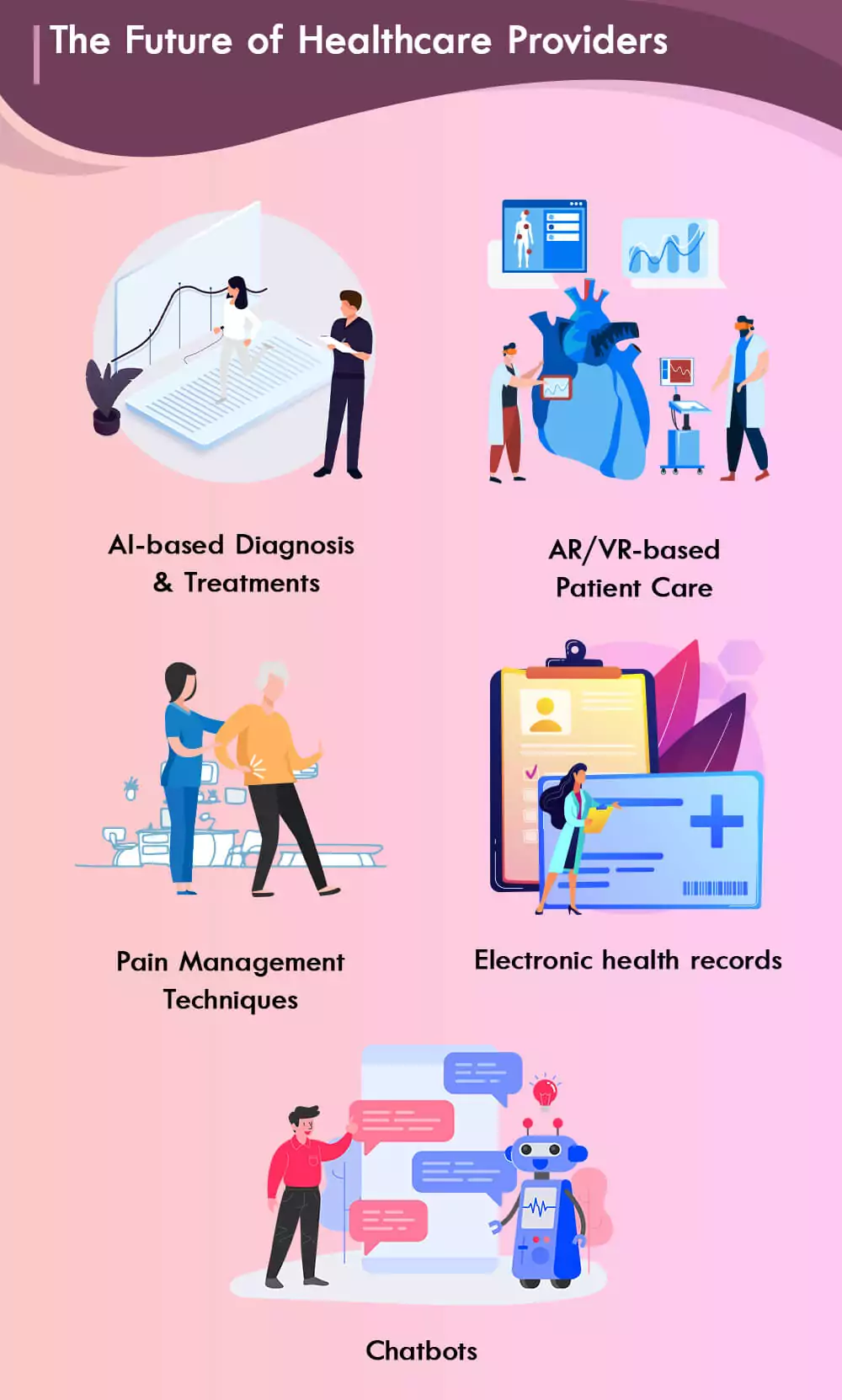
The future of healthcare providers is all about transparent operations, optimized data interoperability, AI-based diagnosis and treatments, AR/VR-based patient care and pain management techniques, paperless transactions, tablet-based management solutions, electronic health records, chatbots for immediate consultations and more.
The future looks promising and with further advancements, we wouldn’t have to endure another pandemic.
This is the most exciting and ideal phase of development in human history. If you feel you have the game-changing idea in you in healthcare services, this is when you make it a tangible product. The market requires new and revolutionary ideas that offer custom and tailor-made solutions addressing distinct healthcare needs.
That’s why we recommend getting in touch with us to get started with the development of your healthcare app, patient management or hospital management app.